From Data Models to Predictive Analysis:
How Predictive Analytics Companies are Transforming the Supply Chain
Artificial intelligence (AI) is revolutionizing how businesses operate across a range of industries, and the supply chain sector is no exception. Predictive analysis companies like Ceres Technologies are leading the way in utilizing AI and data models to optimize supply chain operations, prevent supply chain disruptions, improve efficiency, and reduce costs. In this article, we will explore the role of predictive analytics companies in the future of AI in the supply chain, focusing on digital twins and data models.

Let's Connect
Contact our experts to learn how we can help you accelerate insights.
How is AI used to prevent supply chain disruptions?
AI is increasingly being used to prevent supply chain disruptions by providing real-time insights and predictive analytics to identify potential issues before they occur. Some of the ways AI is being used to prevent supply chain disruptions includes:

Demand forecasting
AI algorithms can accurately predict future product demand by analyzing historical data and current market trends. This allows supply chain managers to adjust inventory levels and production schedules accordingly, minimizing the risk of stockouts or excess inventory.

Risk assessment
AI-powered risk assessment tools can identify potential risks in the supply chain, such as weather events, geopolitical instability, or supplier bankruptcies. By monitoring news feeds, social media, and other data sources, these tools can provide early warning signs of potential disruptions, allowing supply chain managers to take proactive measures to mitigate the impact.

Supply chain optimization
AI can optimize supply chain operations by identifying bottlenecks, inefficiencies, and areas for improvement. By analyzing data from across the supply chain, AI algorithms can identify opportunities to reduce costs, improve delivery times, and increase efficiency.

Real-time monitoring
AI-powered sensors and monitoring systems can provide real-time visibility into the supply chain, allowing managers to track inventory levels, shipments, and other vital metrics. This will enable managers to identify and respond to any issues, preventing disruptions quickly.

Predictive maintenance
AI algorithms can analyze data from sensors and other monitoring systems to predict when equipment is likely to fail. By identifying potential issues before they occur, supply chain managers can schedule maintenance and repairs to minimize downtime and prevent disruptions.
Overall, AI is becoming an increasingly important tool for preventing supply chain disruptions, but the future depends on data accuracy using data models and something called digital twins.
Digital Twins: What Are They, How Are They Created, and How Are
They Used?
A digital twin is a virtual replica of a physical object, process, or system. In the supply chain context, a digital twin can be used to create a virtual representation of a supply chain network, including all the components, processes, and resources involved in the movement of goods from supplier to customer.
To create a digital twin, we use data from various sources, including sensors, ERP data, third-party data, RFID tags, and other tracking technologies, to build a real-time, 3D supply chain network model. This model then simulates different scenarios, tests various strategies, and identifies potential bottlenecks or inefficiencies.
The use of digital twins in the supply chain has several benefits, including improved visibility, increased agility, and enhanced decision-making. With a digital twin, supply chain managers can monitor and optimize their operations in real time, identify potential issues before they occur, and make data-driven decisions that improve efficiency and reduce costs.
Data Models: What Are They, and What Data Is Needed?
A data model represents the relationships between different data elements in a system. In the supply chain context, a data model can be used to create a visual map of the various components, processes, and resources involved in the movement of goods from supplier to customer.
To create a data model, a predictive analysis company like Ceres Technologies uses data from a variety of sources, including enterprise resource planning (ERP) systems, warehouse management systems (WMS), transportation management systems (TMS), and other supply chain management tools. This data is then organized and structured to allow for analysis and visualization.
Using data models in the supply chain has several benefits, including improved visibility, increased efficiency, and enhanced decision-making. With a data model, supply chain managers can quickly identify trends and patterns, monitor performance metrics, and make data-driven decisions that improve efficiency and reduce costs.
The future of supply chain data models will likely involve the increasing use of advanced technologies such as more advanced, intuitive artificial intelligence, machine learning, blockchain, and the Internet of Things. These technologies will enable greater automation, real-time data analysis, and collaboration between different parties in the supply chain. Cloud computing will also play a significant role in helping real-time data sharing and collaboration. Overall, the goal will be to achieve greater visibility, prevent or at least minimize risk, increase efficiency, and add transparency across the entire supply chain.
Predictive Analytics Companies: Leading the Way in AI and the Supply Chain
Our team of data scientists ar at the forefront of the AI revolution in the supply chain. By leveraging advanced analytics, machine learning, and other AI technologies, these companies are helping supply chain managers optimize their operations, reduce costs, and improve customer satisfaction.
One of the key advantages of predictive analytics companies is their ability to provide deep and predictive insights into supply chain operations. By using data from various sources, these companies can monitor every aspect of the supply chain, from raw material procurement to final delivery, and identify potential issues before they occur.
Another advantage is their ability to analyze historical data and identify patterns and trends. These companies can predict future outcomes and provide recommendations for improving supply chain performance.
Lastly companies are driving innovation in the supply chain by developing new technologies and tools that leverage AI to improve efficiency and reduce costs. For example, Ceres Technologies has developed a platform that combines predictive analytics, digital twins, and data models to provide real-time insights into supply chain operations and optimize performance.
Looking for some support for your supply chain?
AI in the supply chain is transforming how businesses operate, and predictive analytics companies like Ceres Technologies are leading the way. Contact our team for a custom demo of the Nostradamus platform and learn what it can do for your business.
The benefits of AI and analytics–powered supply chains are plenty, and now is the best time for your business to leverage them.
Discover how it all comes together with our Real-Time Visibility platform that can connect your entire supply chain.

